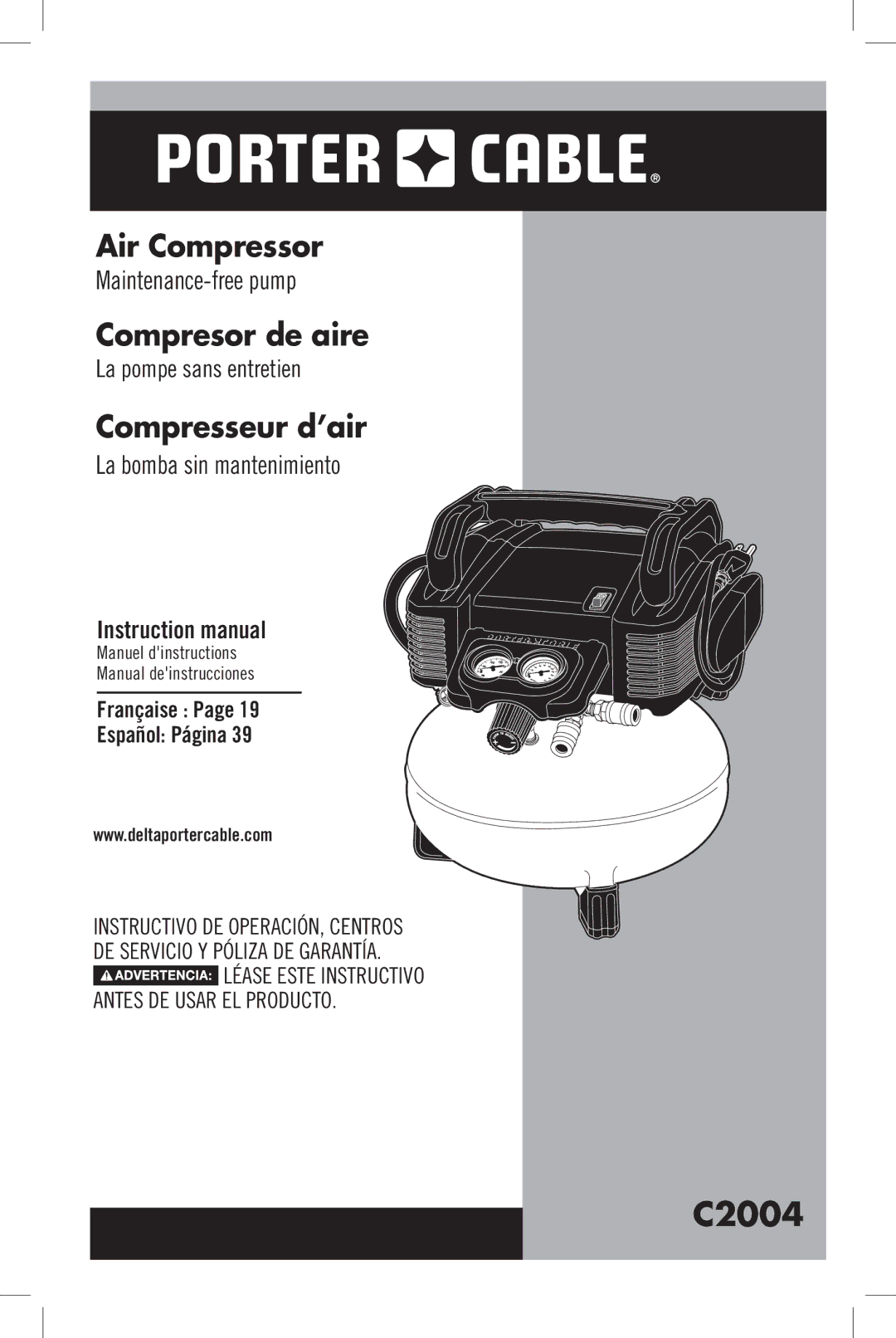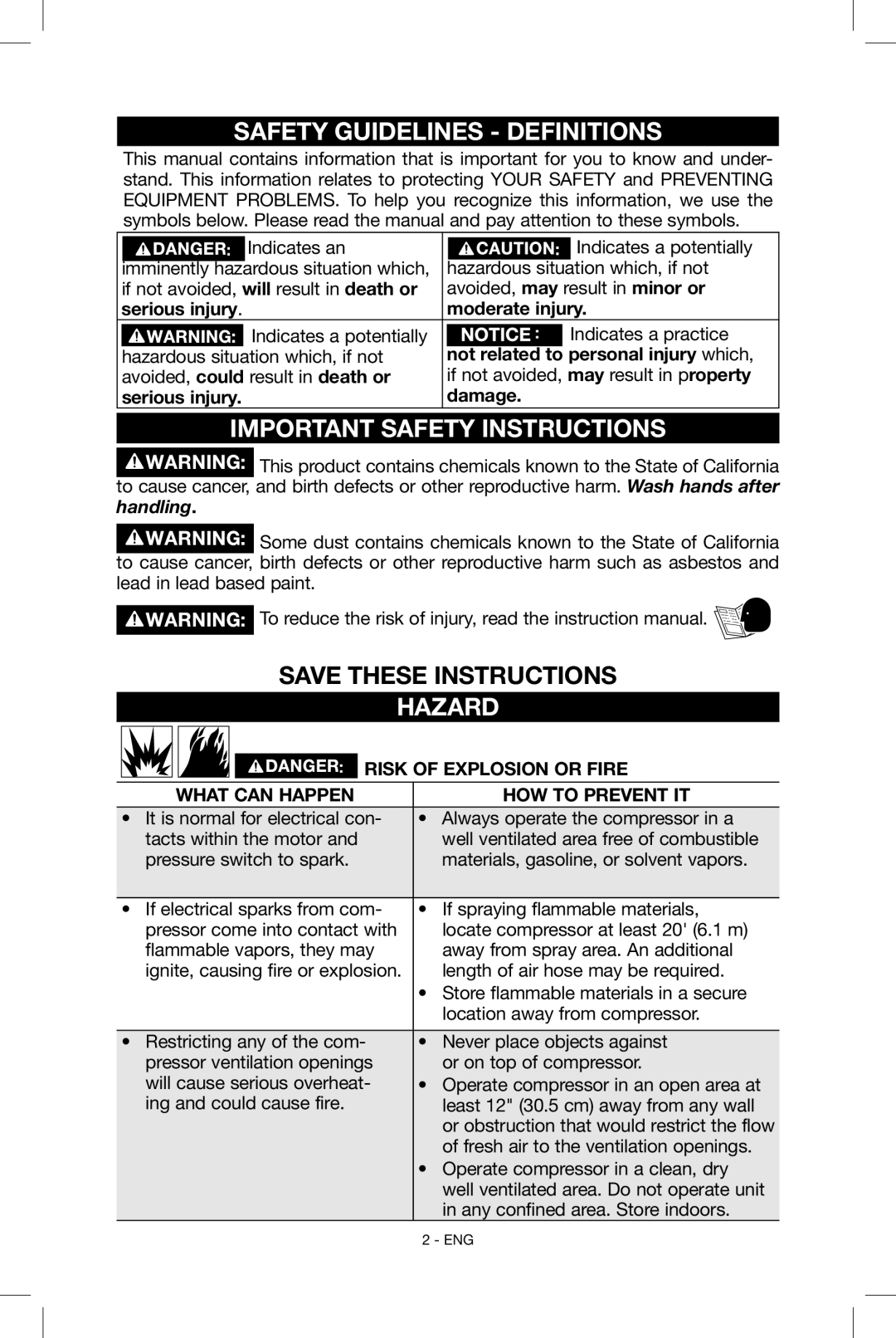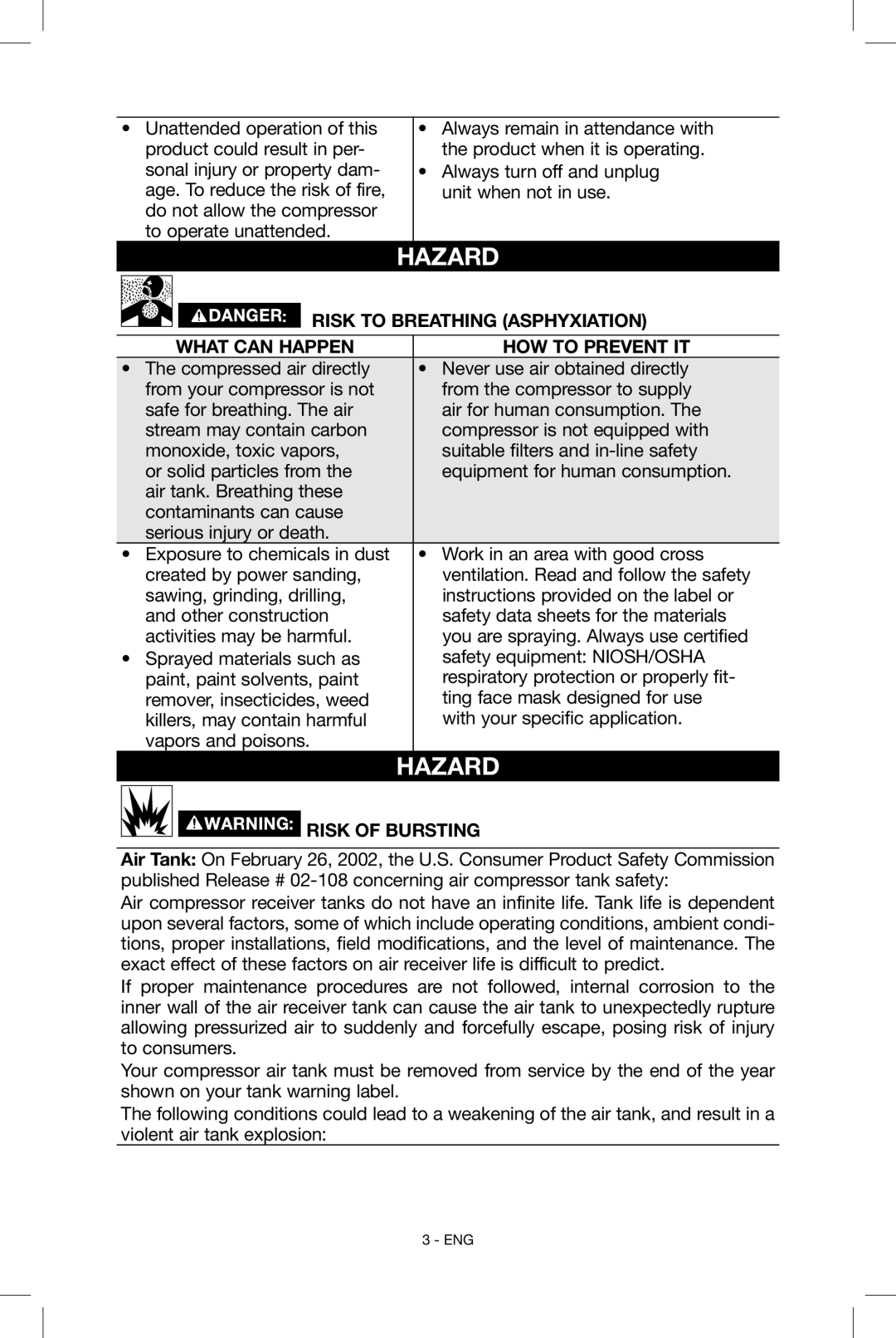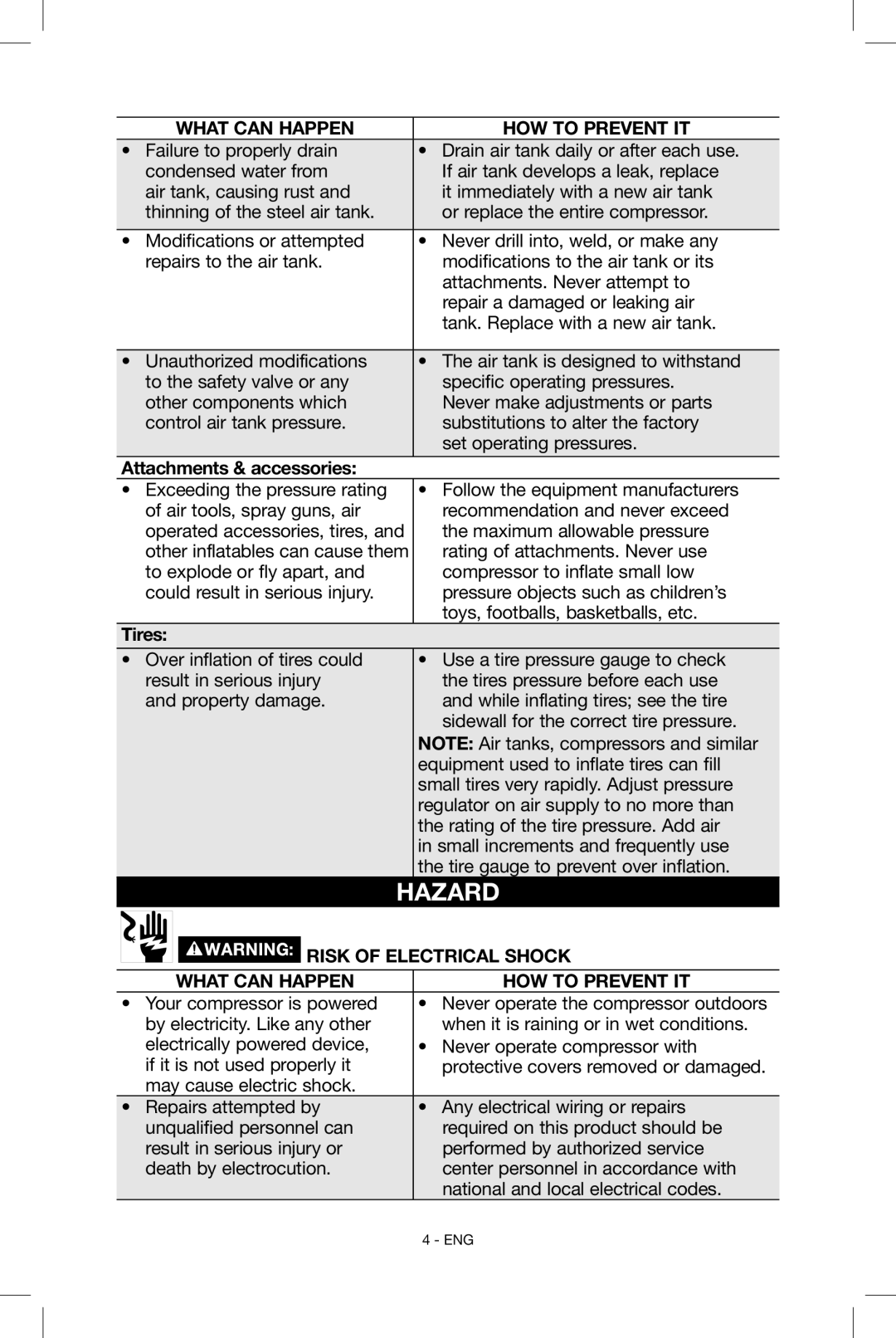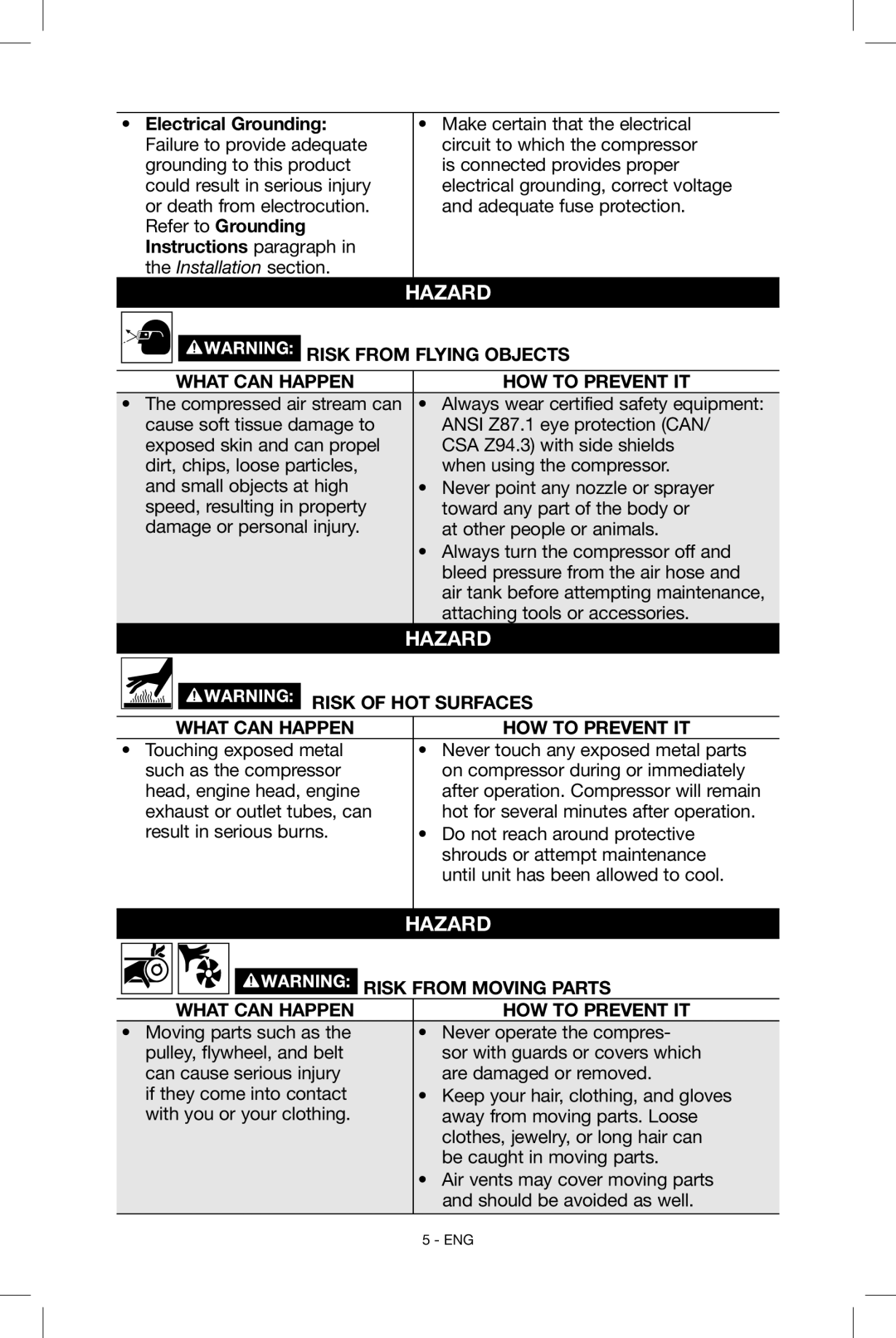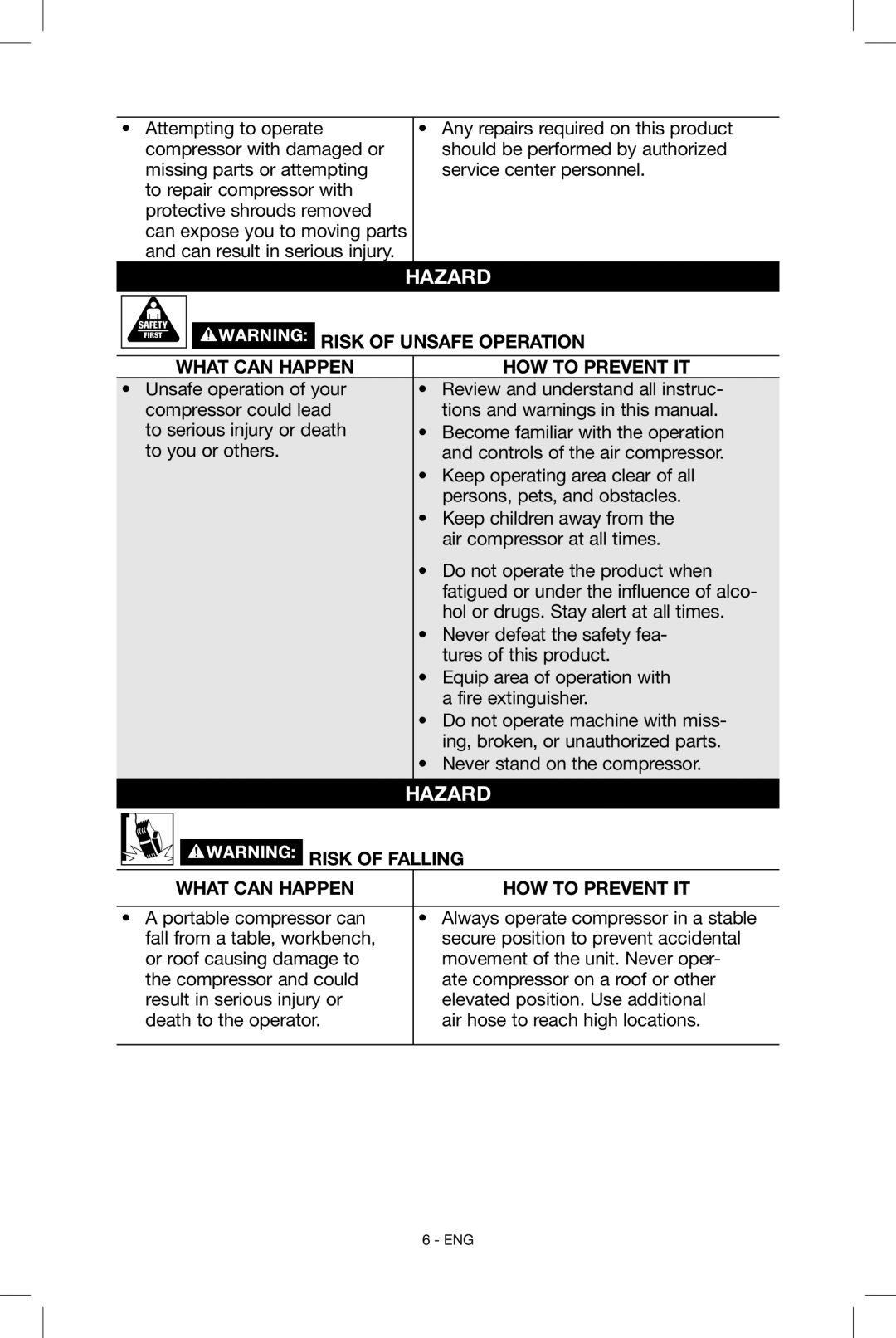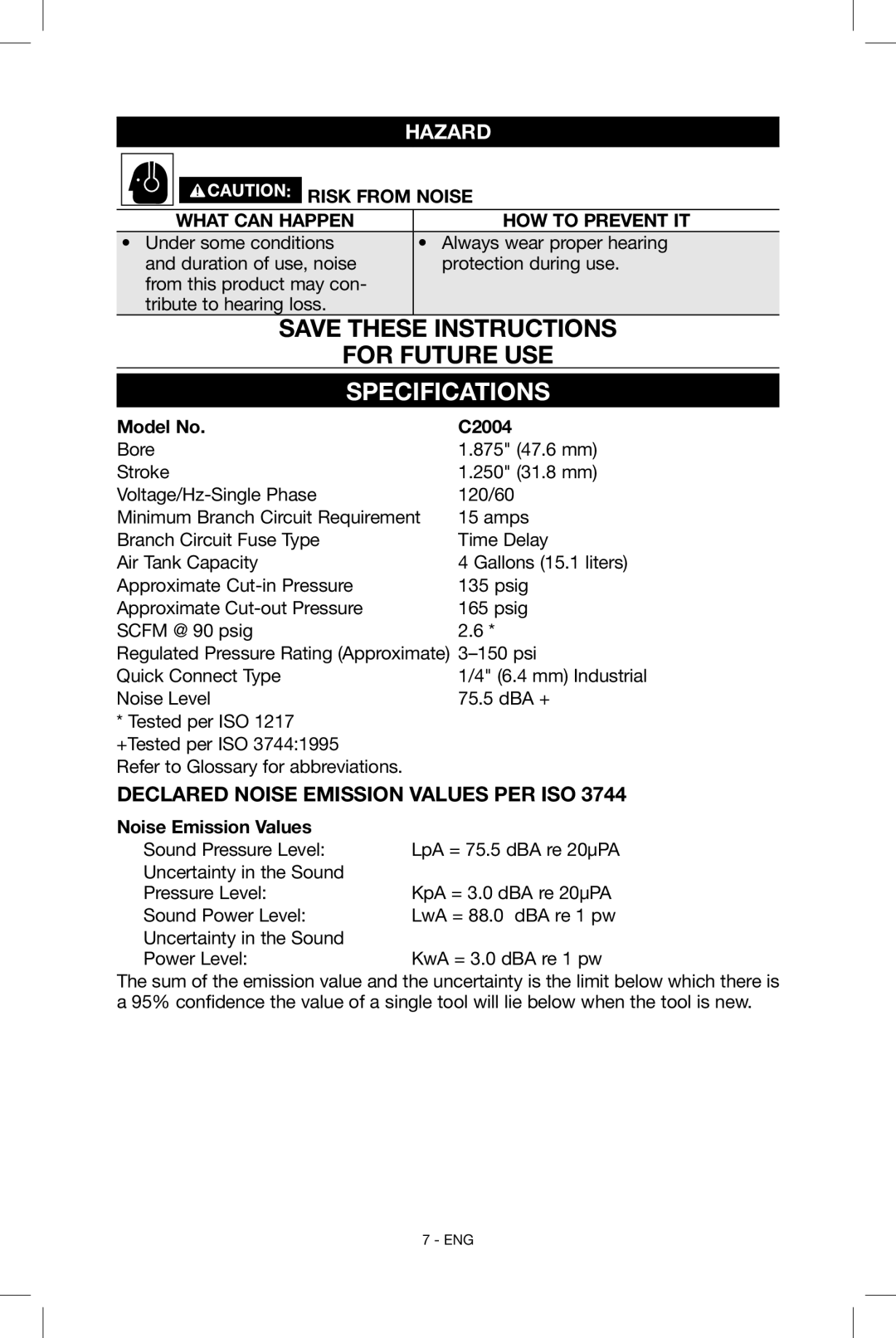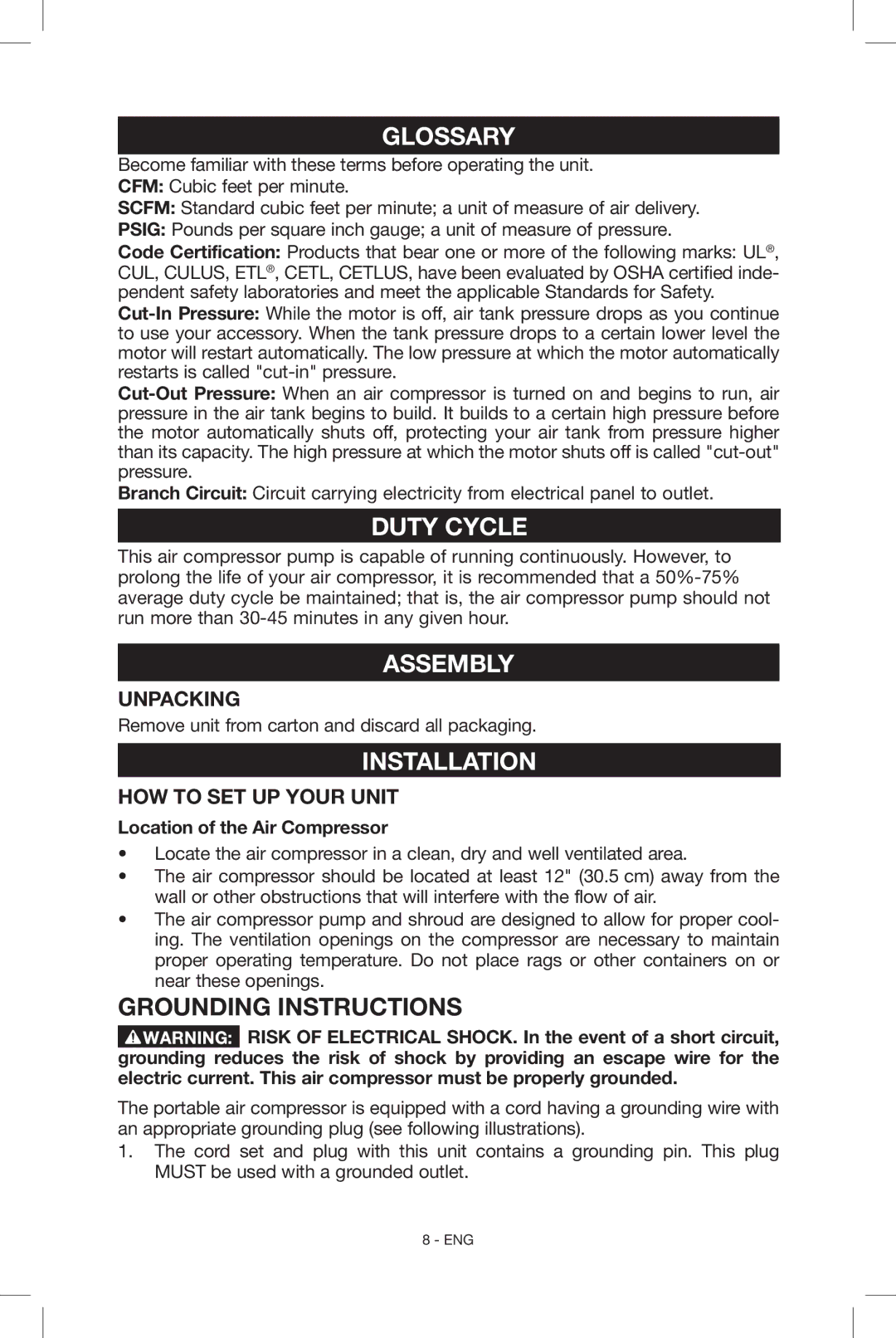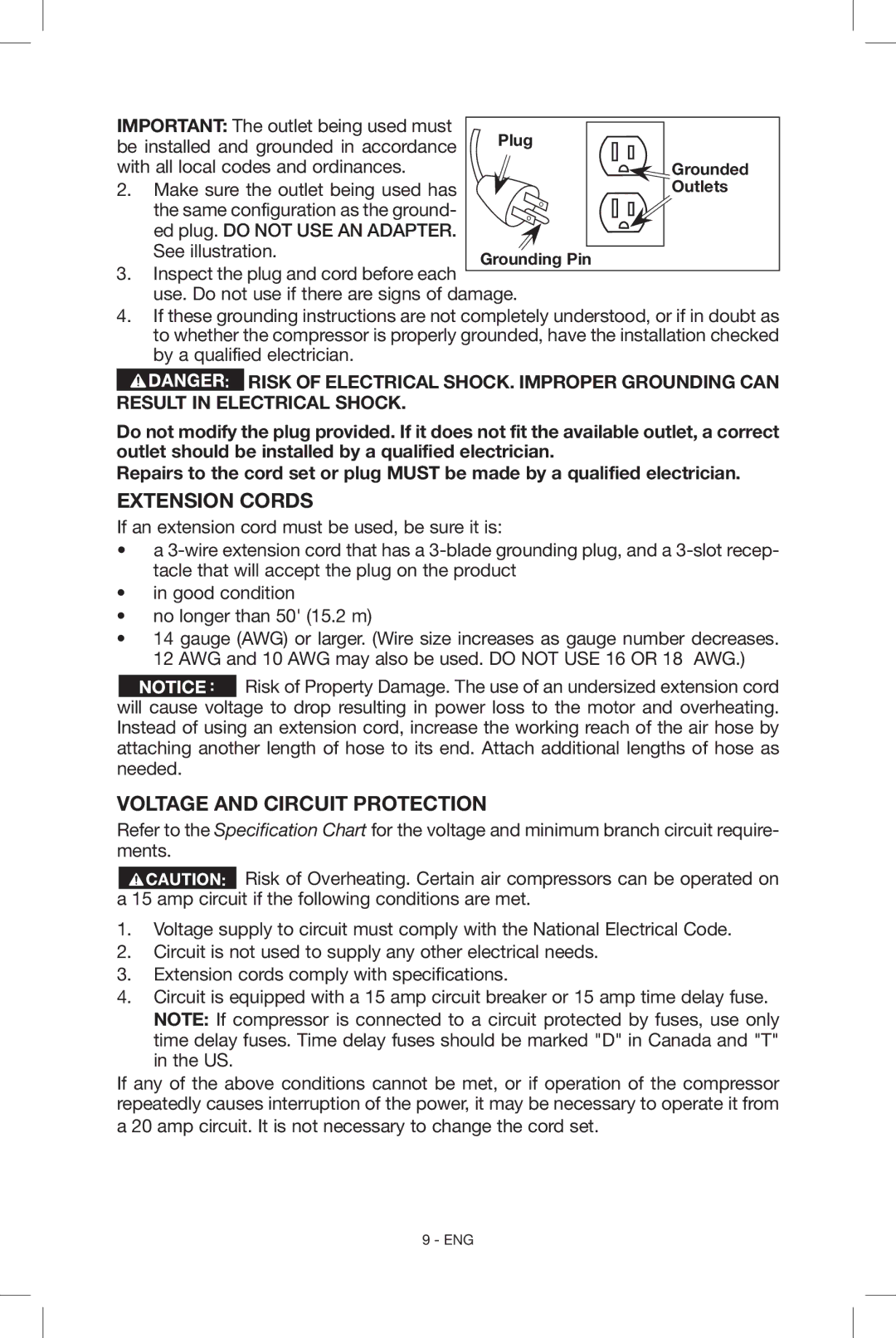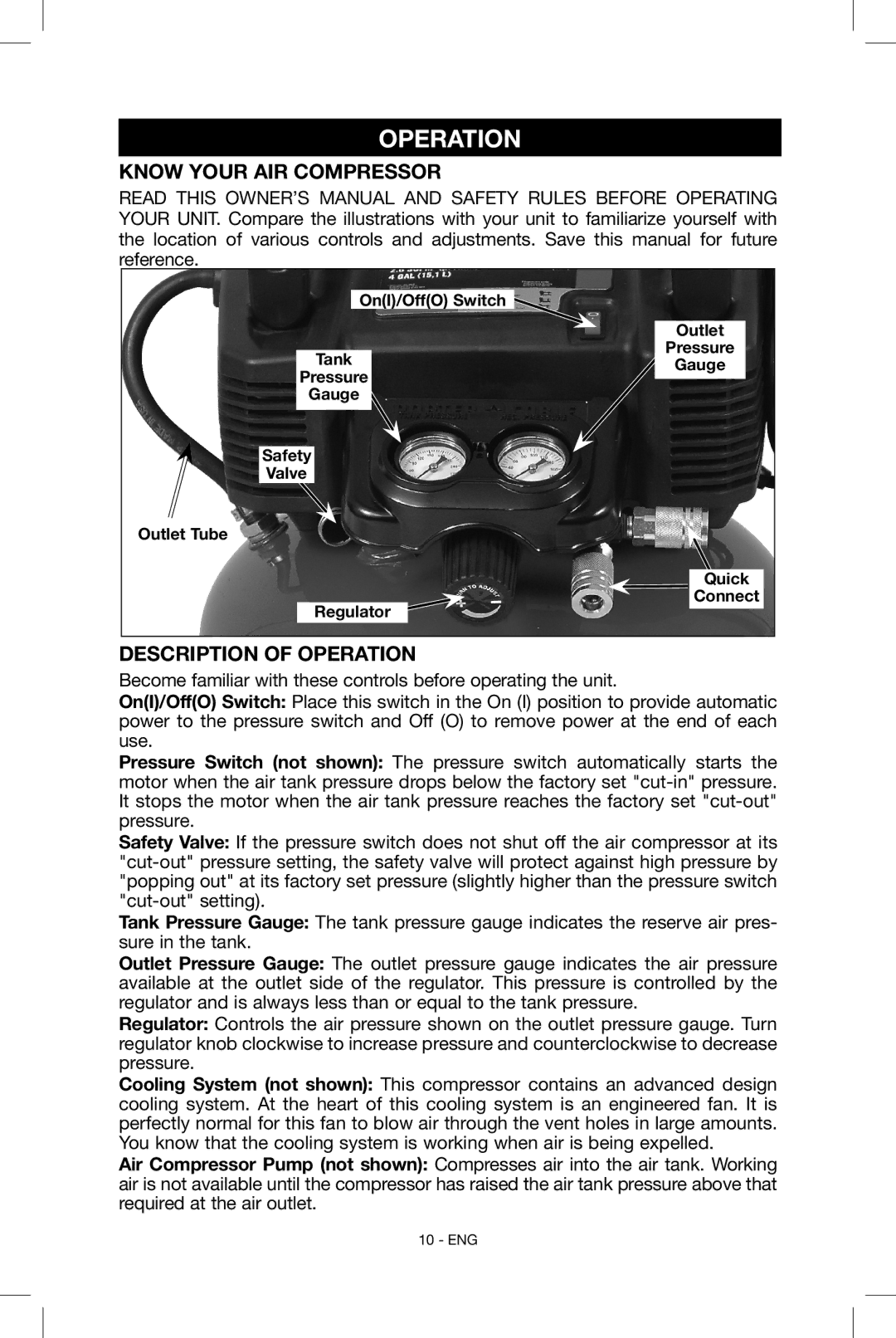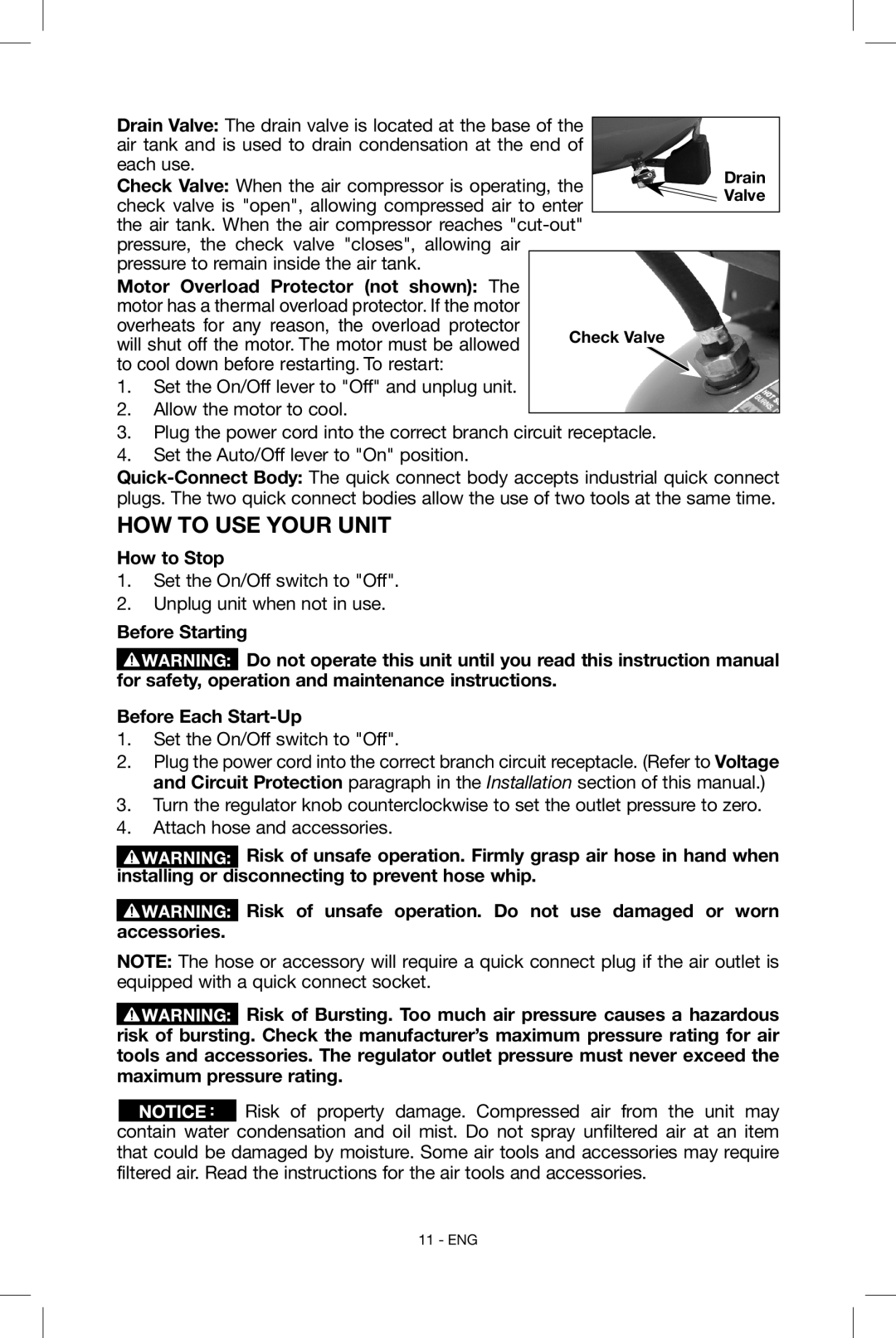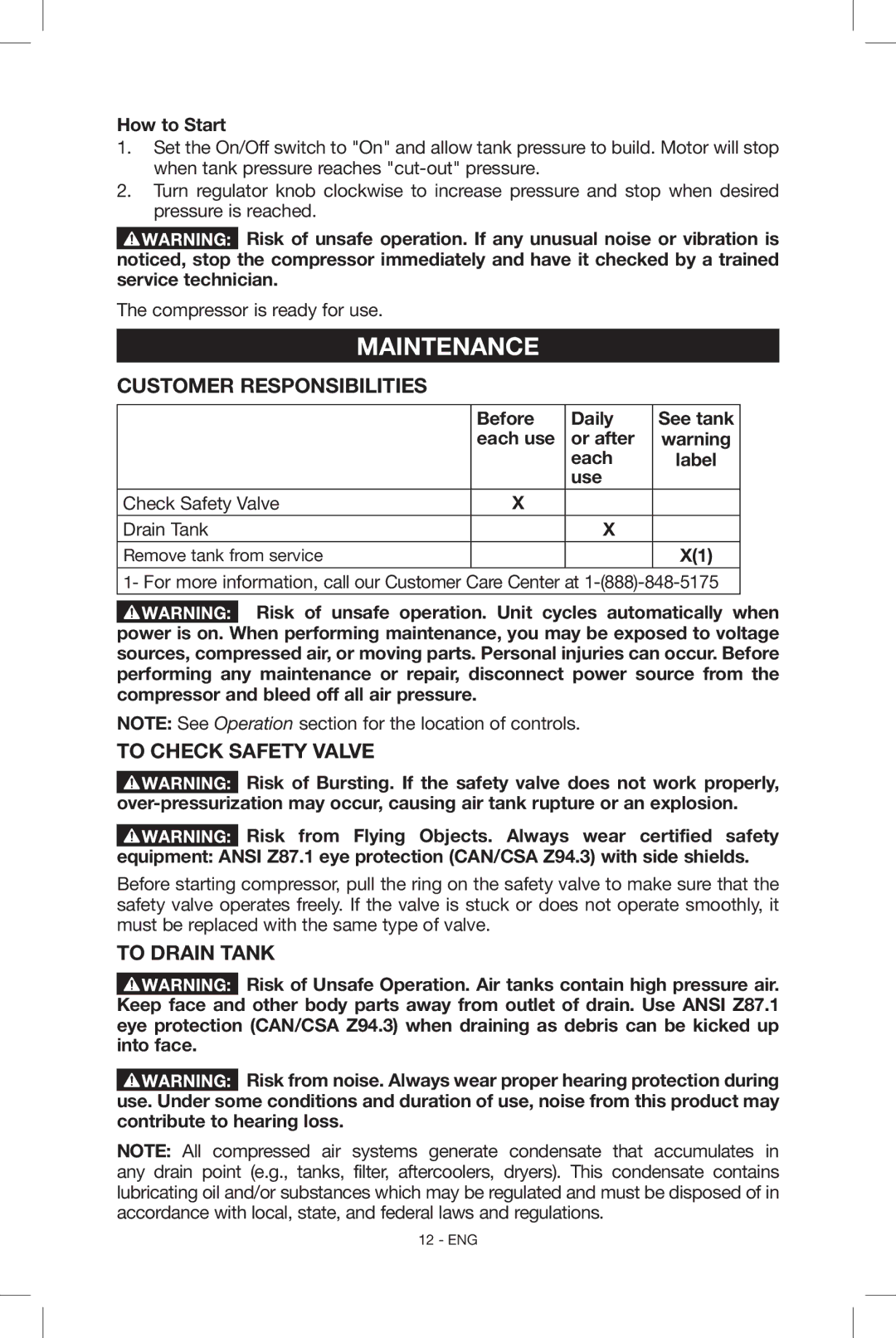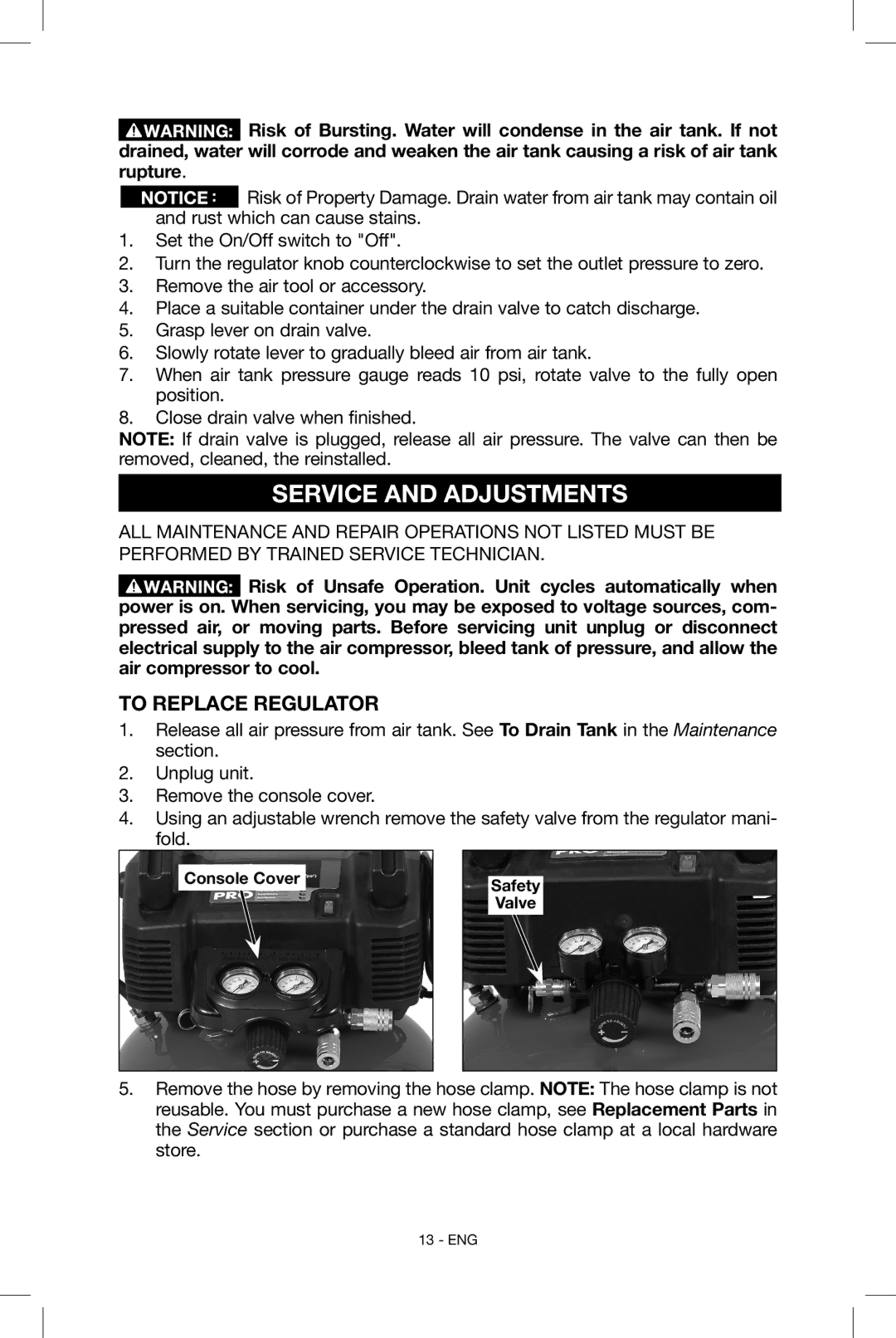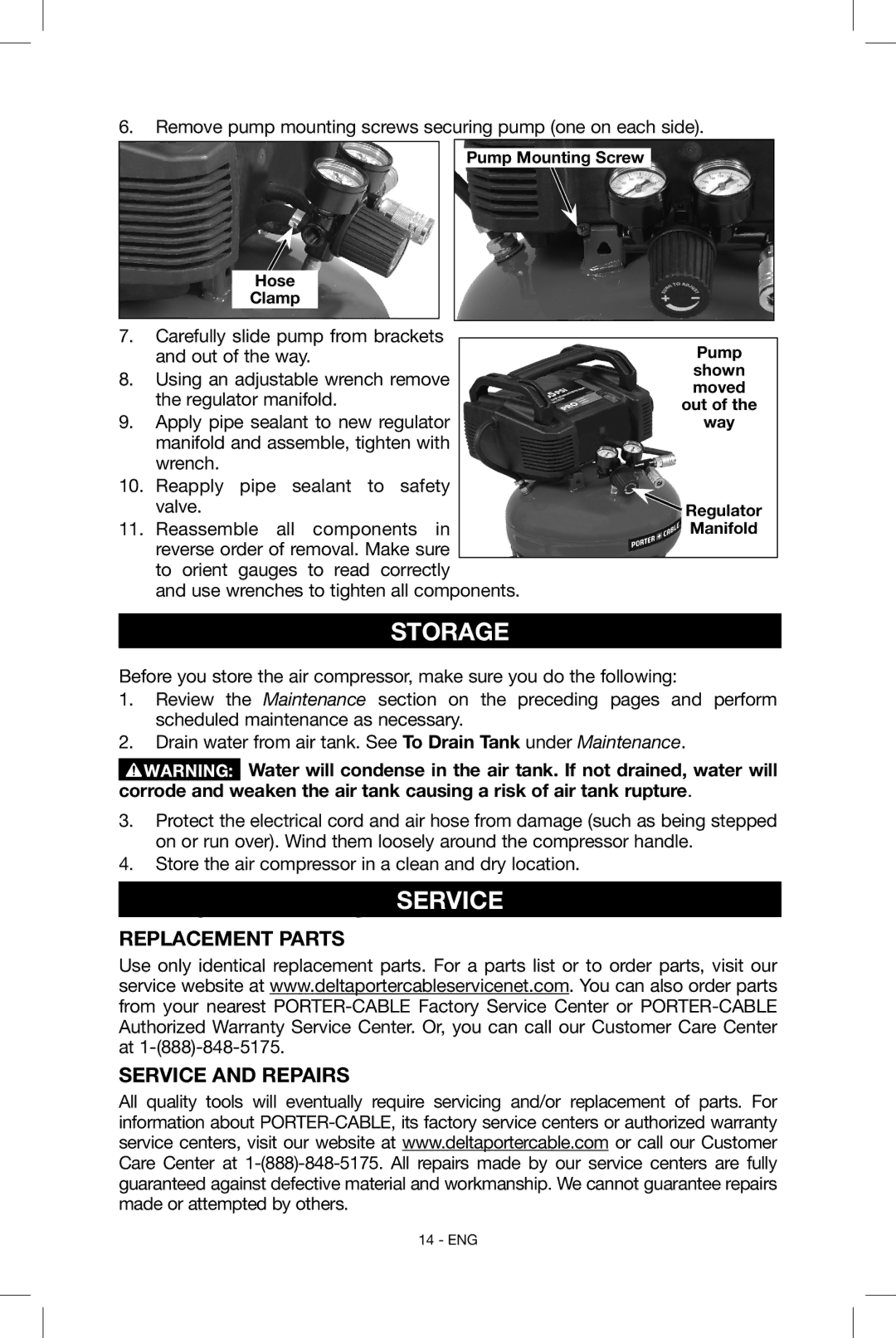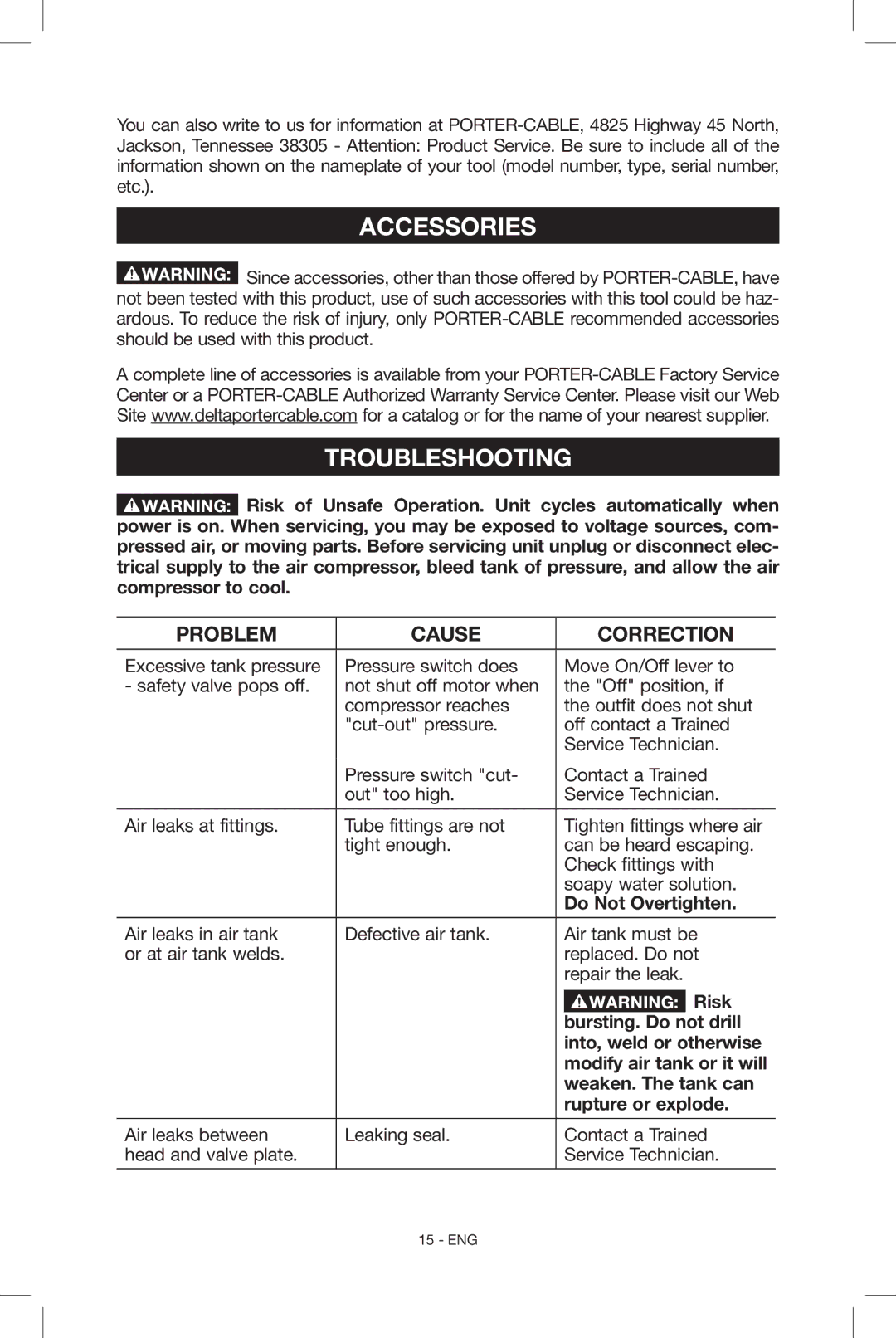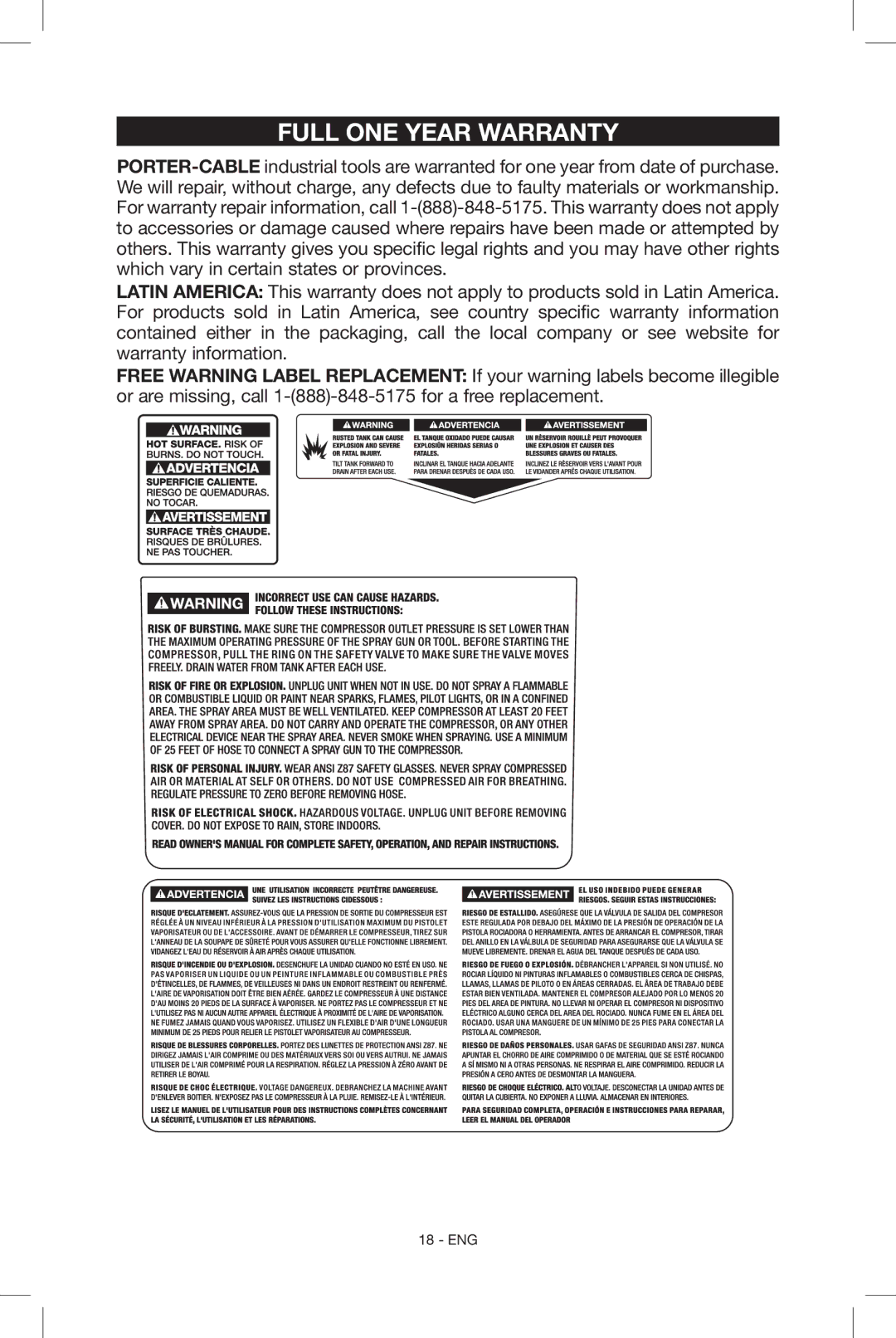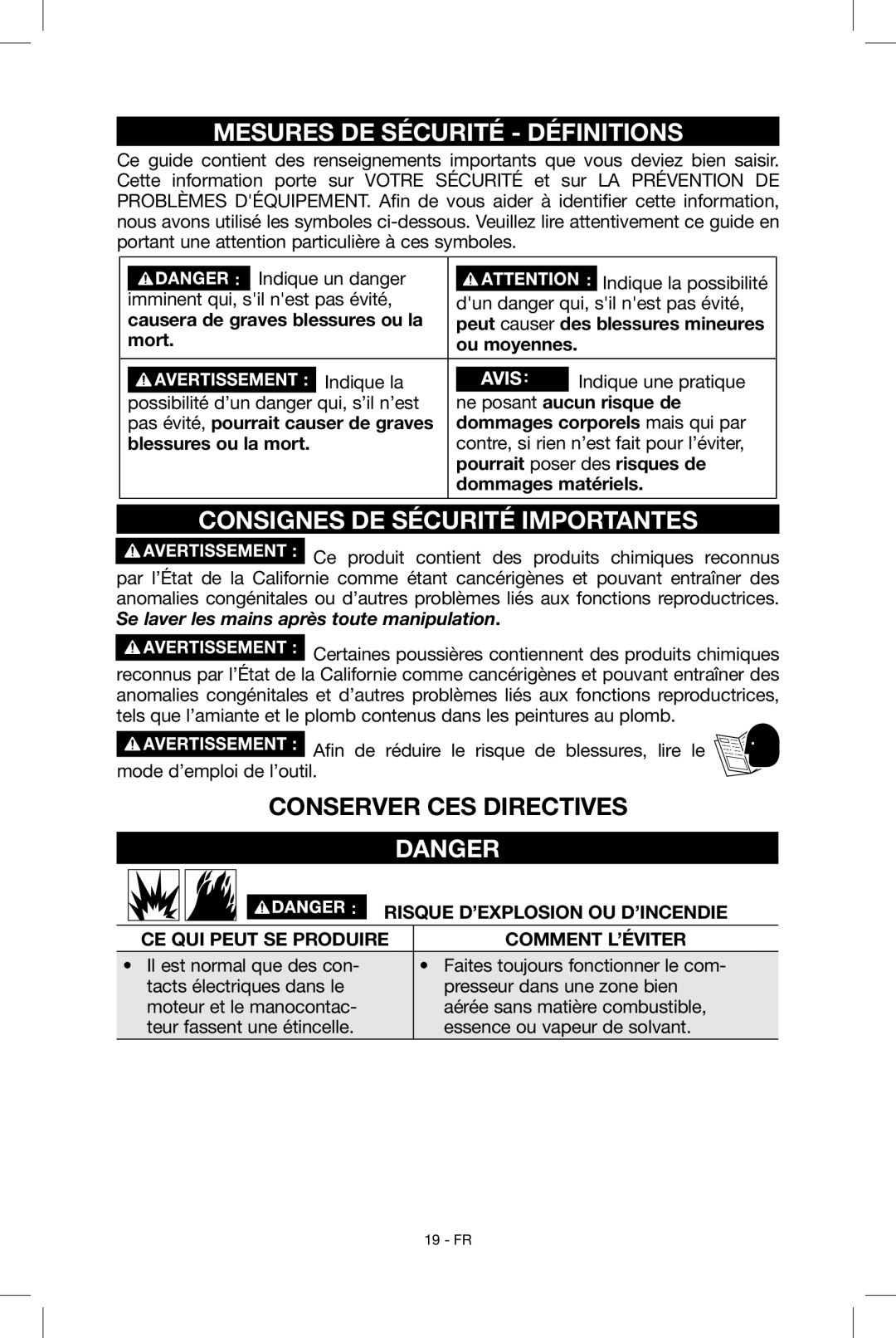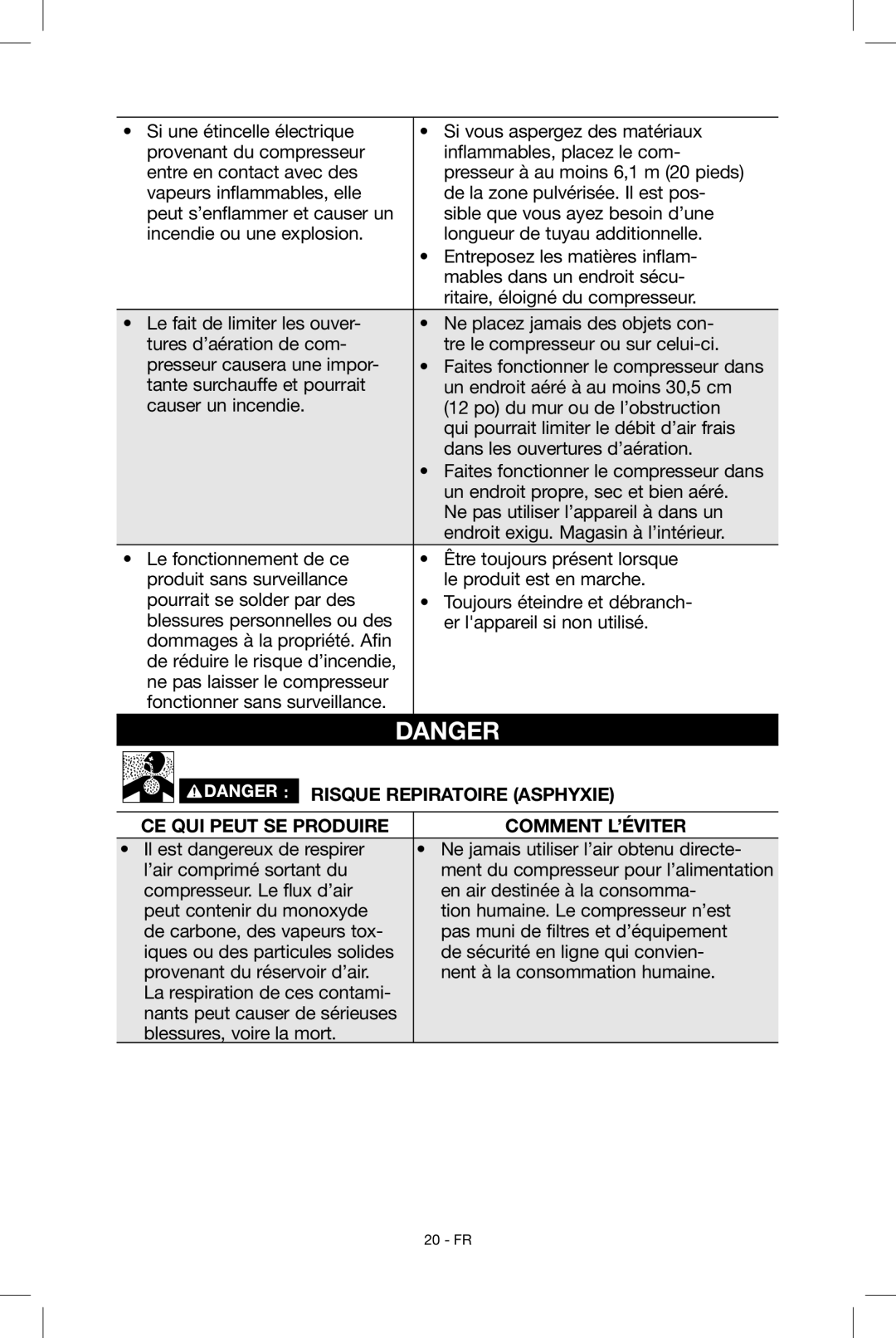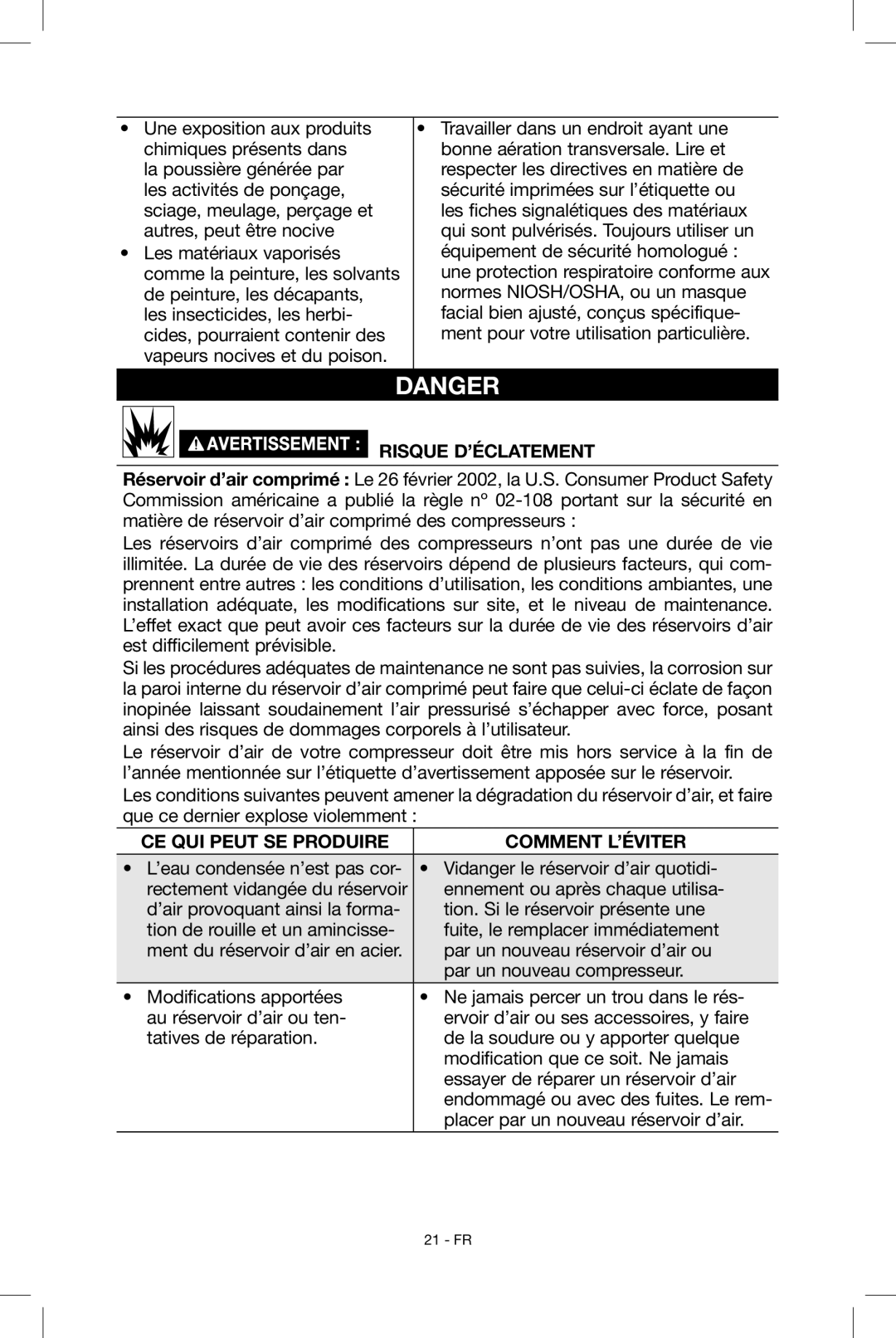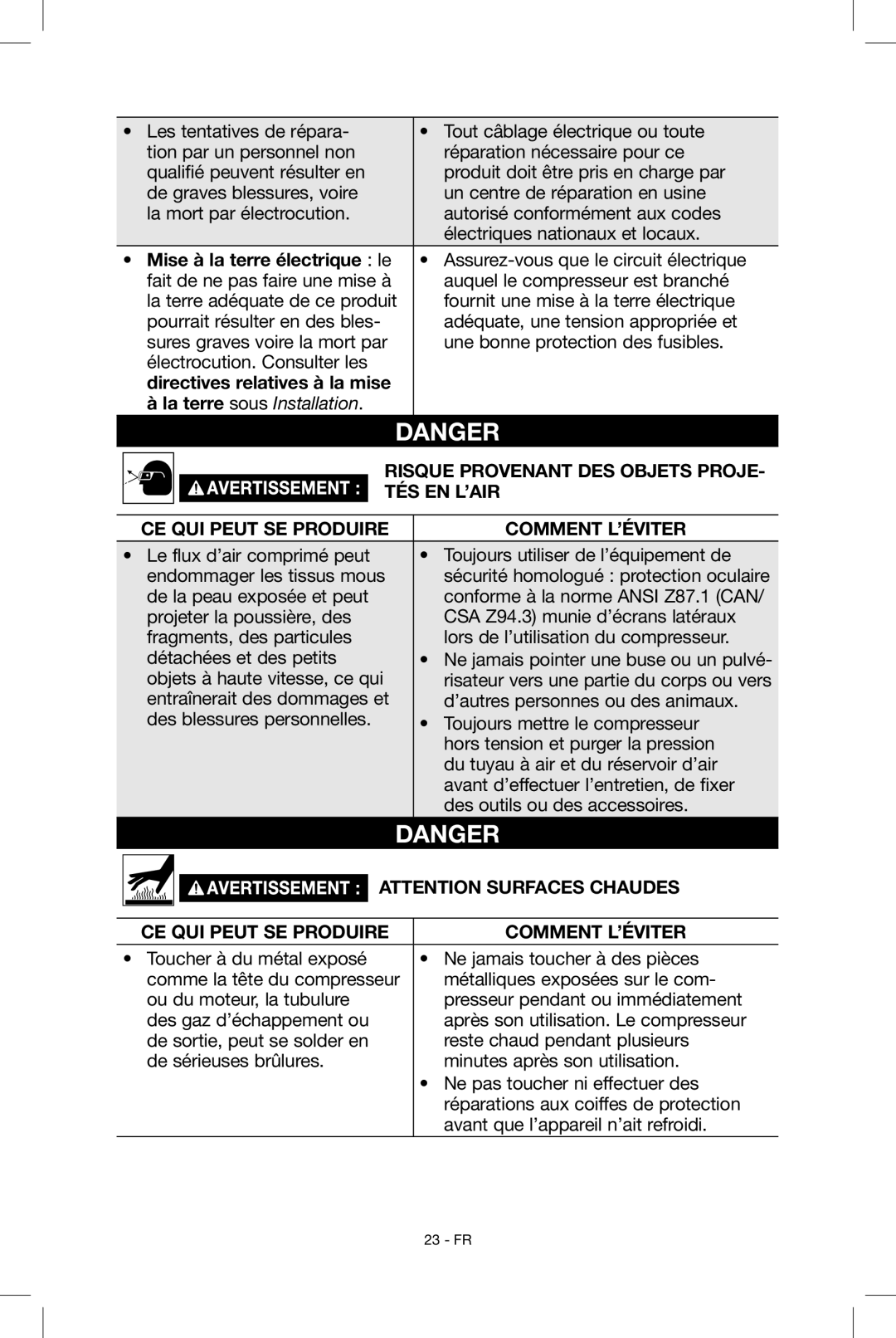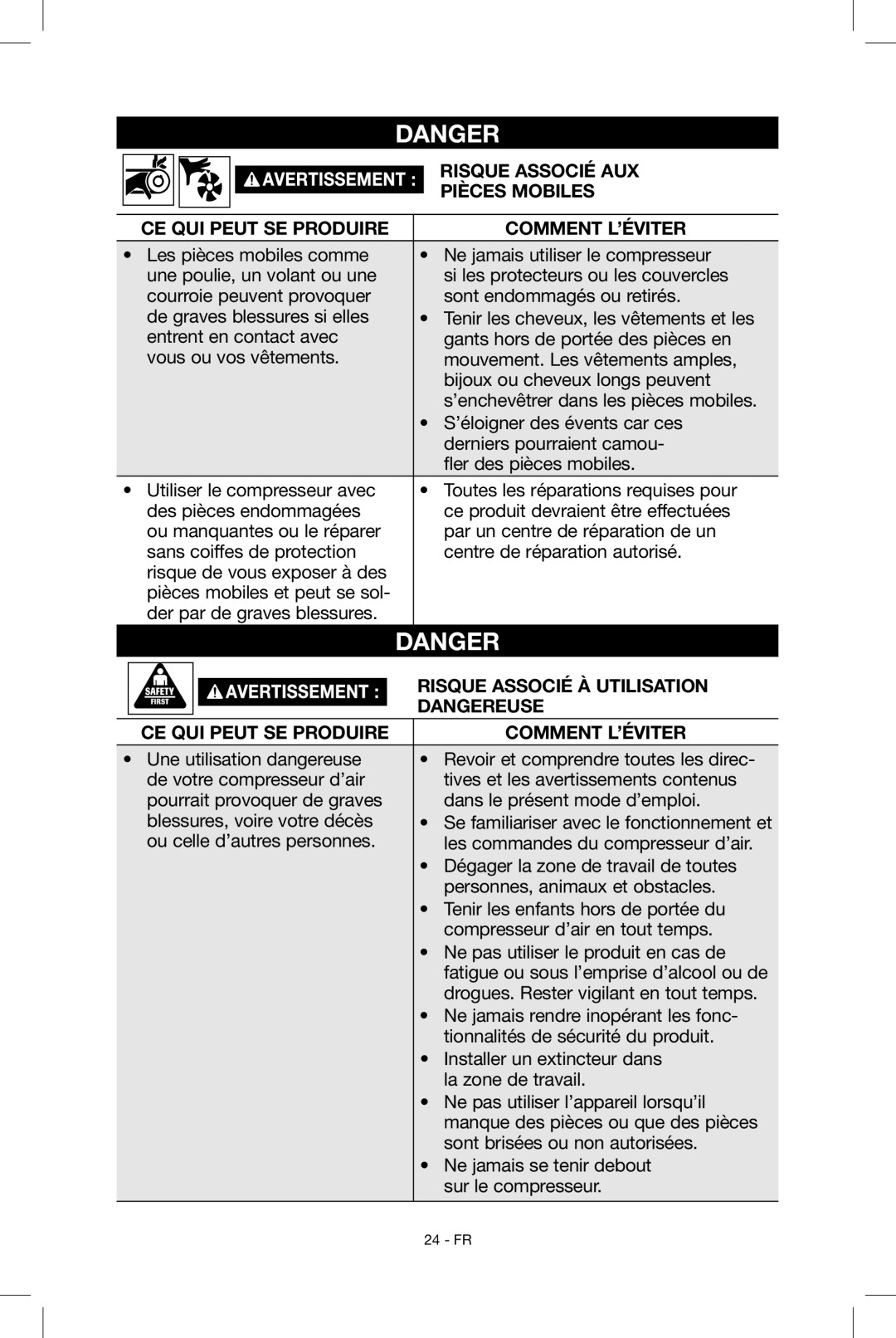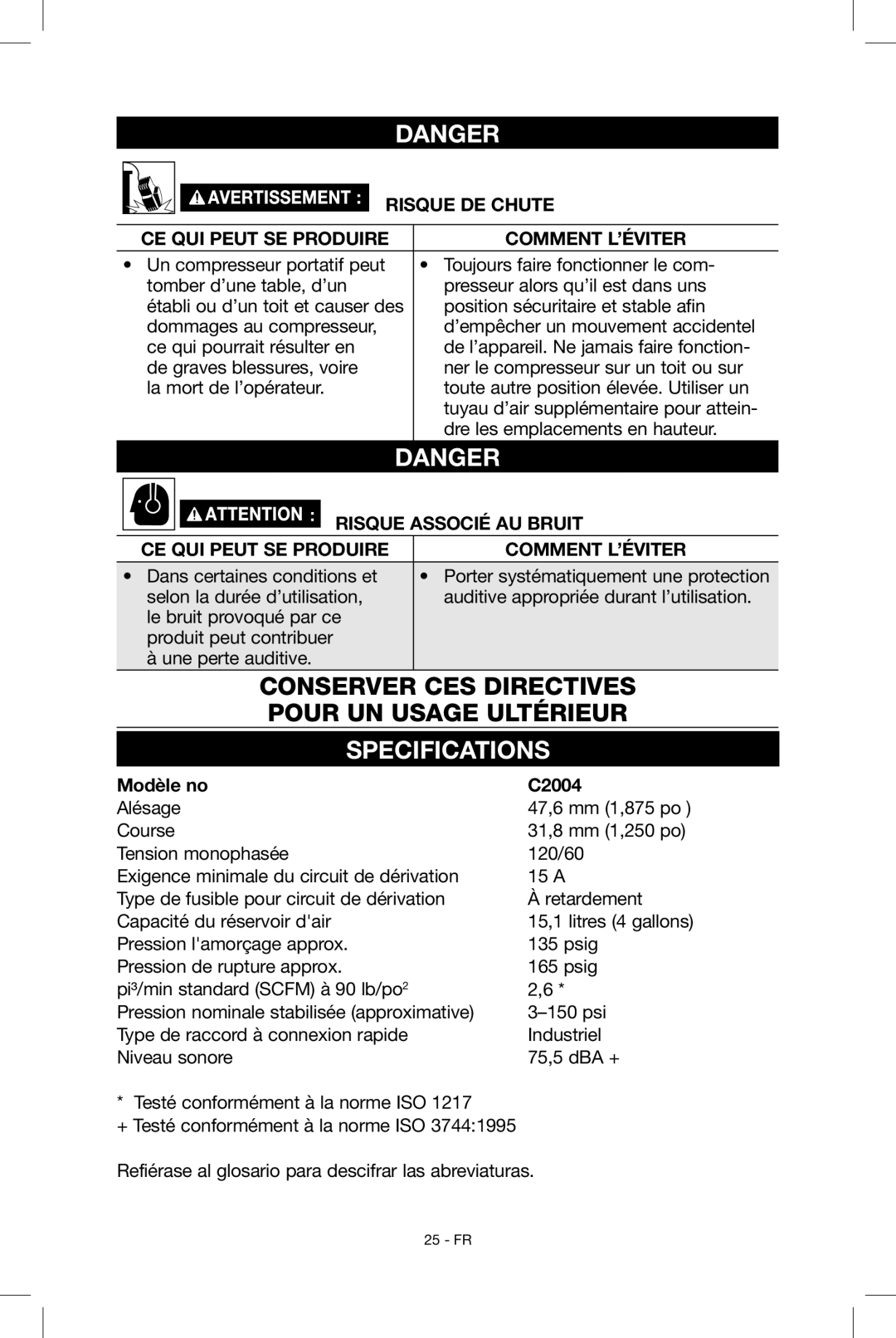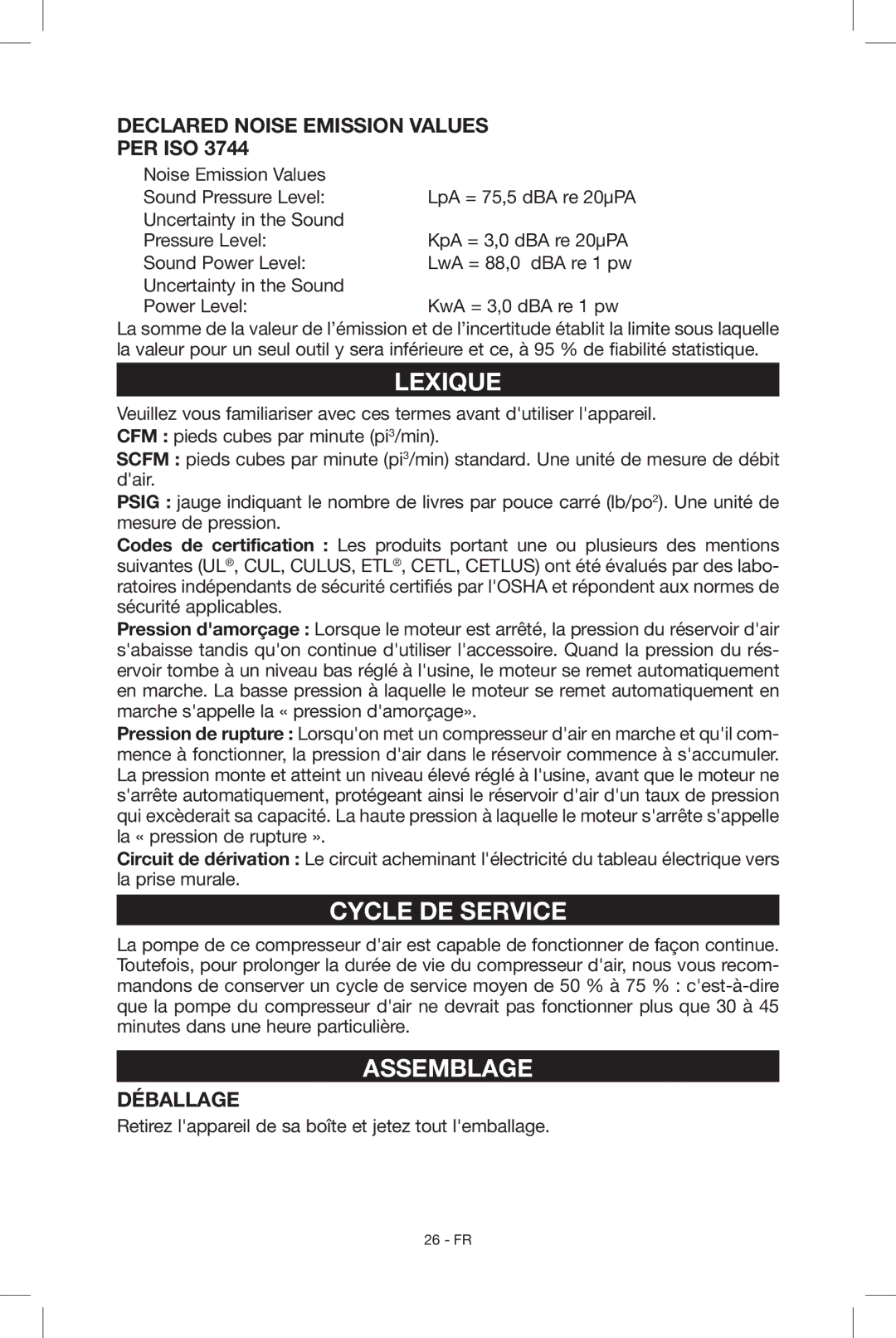
•Unattended operation of this product could result in per- sonal injury or property dam- age. To reduce the risk of fire, do not allow the compressor to operate unattended.
•Always remain in attendance with the product when it is operating.
•Always turn off and unplug unit when not in use.
HAZARD
RISK TO BREATHING (Asphyxiation)
What can happen | How to prevent it |
• The compressed air directly | • Never use air obtained directly |
from your compressor is not | from the compressor to supply |
safe for breathing. The air | air for human consumption. The |
stream may contain carbon | compressor is not equipped with |
monoxide, toxic vapors, | suitable filters and |
or solid particles from the | equipment for human consumption. |
air tank. Breathing these |
|
contaminants can cause |
|
serious injury or death. |
|
• Exposure to chemicals in dust | • Work in an area with good cross |
created by power sanding, | ventilation. Read and follow the safety |
sawing, grinding, drilling, | instructions provided on the label or |
and other construction | safety data sheets for the materials |
activities may be harmful. | you are spraying. Always use certified |
• Sprayed materials such as | safety equipment: NIOSH/OSHA |
paint, paint solvents, paint | respiratory protection or properly fit |
remover, insecticides, weed | ting face mask designed for use |
killers, may contain harmful | with your specific application. |
vapors and poisons. |
|
HAZARD


 RISK of Bursting
RISK of Bursting
Air Tank: On February 26, 2002, the U.S. Consumer Product Safety Commission published Release #
Air compressor receiver tanks do not have an infinite life. Tank life is dependent upon several factors, some of which include operating conditions, ambient condi- tions, proper installations, field modifications, and the level of maintenance. The exact effect of these factors on air receiver life is difficult to predict.
If proper maintenance procedures are not followed, internal corrosion to the inner wall of the air receiver tank can cause the air tank to unexpectedly rupture allowing pressurized air to suddenly and forcefully escape, posing risk of injury to consumers.
Your compressor air tank must be removed from service by the end of the year shown on your tank warning label.
The following conditions could lead to a weakening of the air tank, and result in a violent air tank explosion:
3 - ENG
